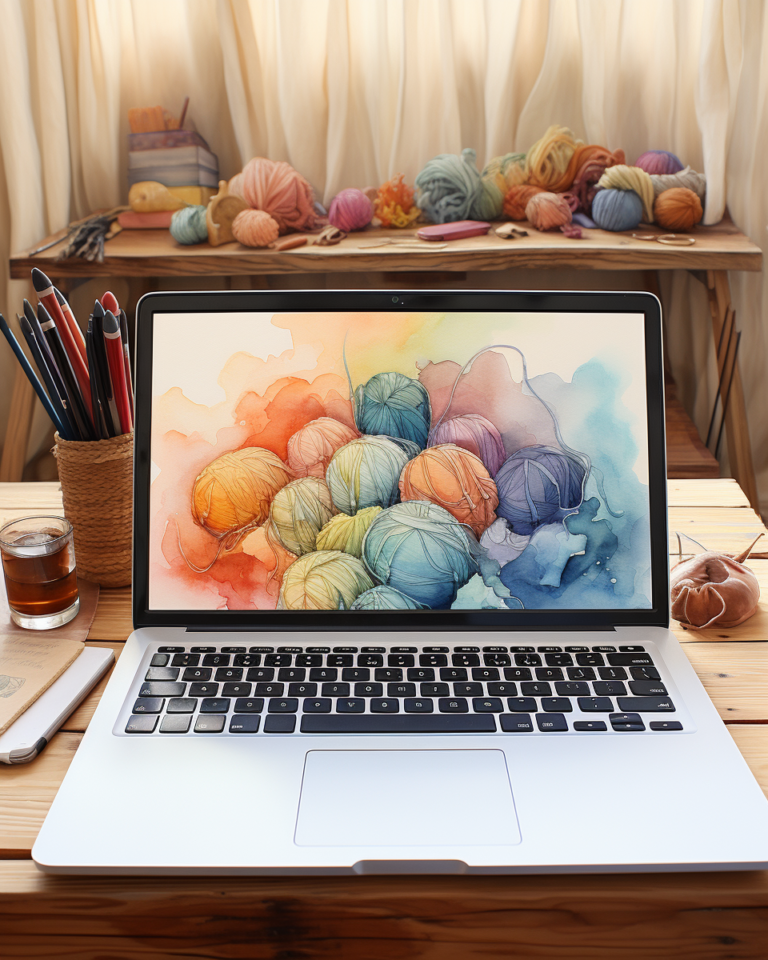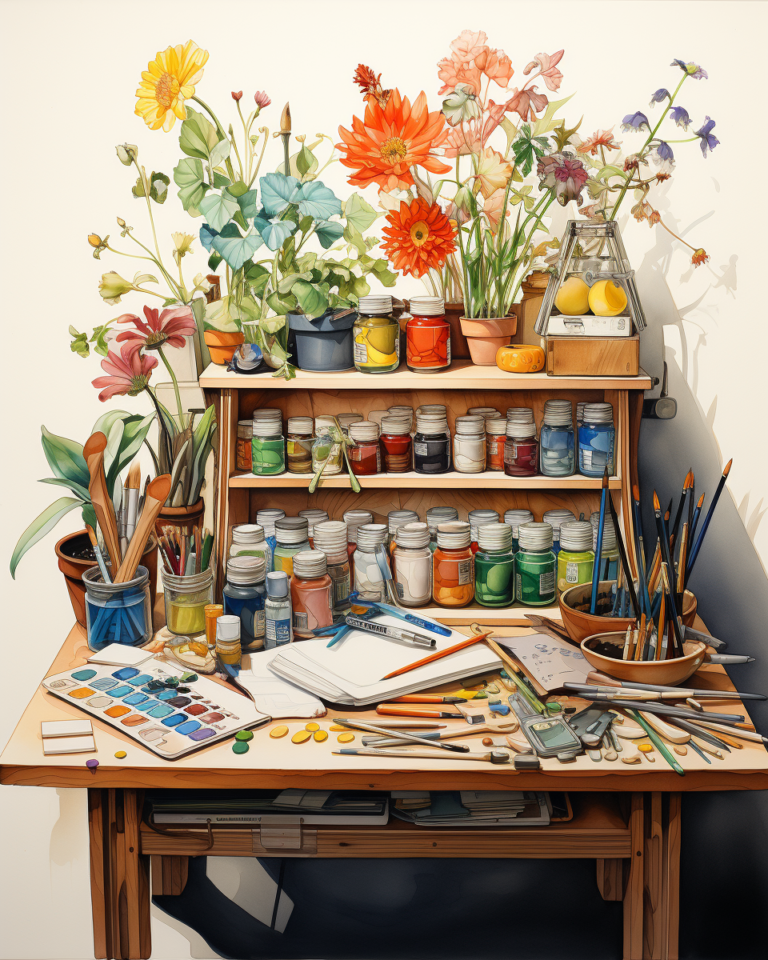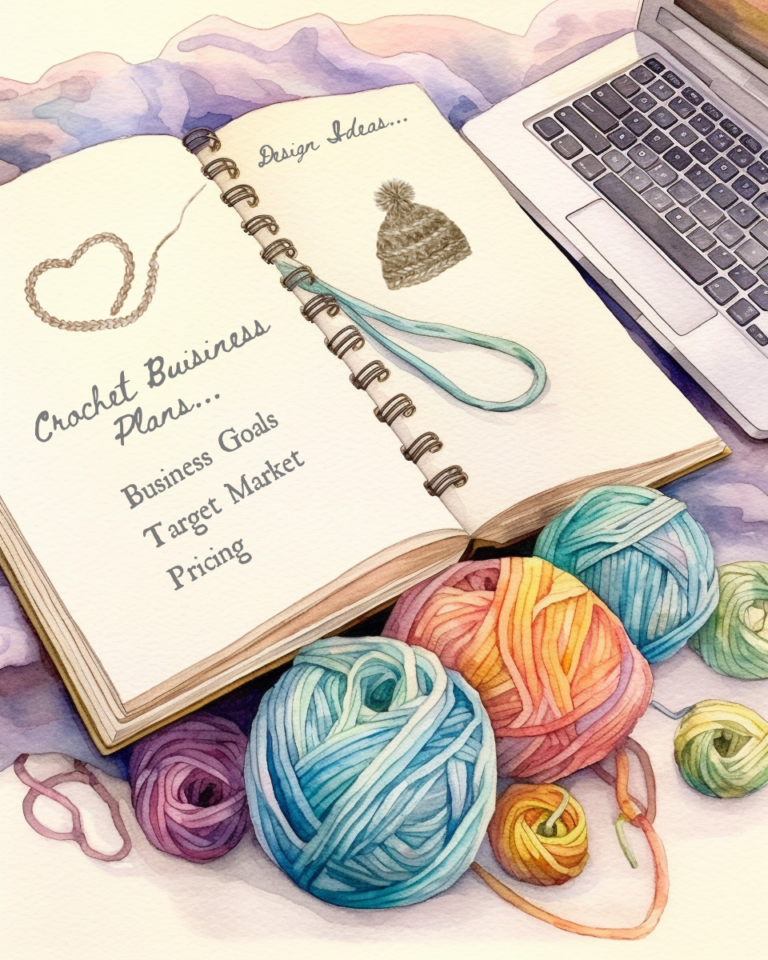Crochet Pattern Templates: The Essential Tool for Every Designer
As a seasoned crochet designer with over a decade of experience under my belt, I can’t emphasize enough the importance of crochet pattern templates. These templates have been my lifesaver, a tool I’ve returned to time and again to streamline my design process and ensure consistency in my work.

Crochet pattern templates are more than just a guide; they are a blueprint that helps you map out your design from start to finish. They help you organize your thoughts, keep track of your stitches, and ensure that your pattern is easy to follow for other crochet lovers. Whether you’re designing a simple baby blanket or an intricate amigurumi pattern, a well-structured template is the first step towards creating a successful crochet pattern.
In this article, I will share my insights and best practices for creating and using crochet pattern templates. Whether you’re a beginner just starting your first crochet pattern or a seasoned designer looking to optimize your process, I hope my experiences and tips will be helpful to you.
Understanding Crochet Basics
Before diving into the world of crochet pattern templates, it’s essential to have a solid understanding of the basic crochet skills. These foundational techniques form the building blocks of all crochet patterns, and mastering them will make your journey into pattern design much smoother.
It’s also important to know the proper abbreviations for stitches and to include a stitch descriptions and abbreviations section in your pattern (whether it’s a paid pattern pdf or free crochet patterns blog post).
Crochet Skills
1. Single Crochet (sc)
The single crochet stitch is the simplest and most basic of all crochet stitches. It’s the starting point for many patterns and a stitch you’ll return to time and time again. Mastering the single crochet stitch is the first step towards creating your own pattern.
2. Double Crochet (dc)
The double crochet stitch is another fundamental stitch that adds height and texture to your patterns. It’s twice as tall as the single crochet stitch, making it a great choice for patterns that require a bit more drama and flair.
3. Half Double Crochet (hdc)
The half double crochet stitch is a versatile stitch that falls in between the single and double crochet stitches in terms of height. It’s a great stitch for adding a bit of texture to your patterns without adding too much height.
4. Treble Crochet (tr)
The treble crochet stitch is a tall stitch that’s perfect for creating loose and lacy patterns. It’s a bit more complex than the single and double crochet stitches, but it’s well worth learning for the unique effects it can create.
5. Slip Stitch (sl st)
The slip stitch is a simple stitch that’s often used to join rounds in crochet patterns. It’s also used to create smooth edges and to move your yarn to a different part of your pattern without adding height.
Yarn Weight and Hook Size
Understanding yarn weight and hook size is crucial when designing your own patterns. The weight of your yarn and the size of your hook will determine the size and drape of your finished project. It’s important to choose the right yarn weight and hook size for your pattern to ensure that it turns out just the way you envision it.
On your pattern, you will want to list the exact yarn used and what weight it is, according to the Craft Yarn Council’s Standard Yarn Weight System. Yes, people will often substitute yarn, but by including the yarn used in your written pattern, they will be able to find an appropriate substitution.
Understanding Different Sizes
When designing your own patterns, you’ll often need to create different sizes. This can be a bit tricky, but with a bit of practice and a good understanding of gauge, you can create patterns that can be adjusted to fit any size.
In the next section, we’ll dive into the process of creating your own crochet pattern templates. Whether you prefer to use a program like Google Docs or Micrsoft Word or a website like Canva, I’ll share my tips and tricks for creating a template that works for you. If you prefer not to make your own, I have crochet pattern templates available in my shop, too!
Creating Your Own Crochet Pattern Template
Once you’ve mastered the basics of crochet design, it’s time to take your skills to the next level by creating your own crochet pattern templates. This process can be as simple or as complex as you want it to be, and there are many different ways to go about it.
Here are a few methods I’ve found to be effective over my years of pattern design.
Using Word, Sheets or Docs
Microsoft Word or Google Docs
Microsoft Word is a great tool for creating crochet pattern templates. It’s user-friendly and offers a wide range of features that can help you create a professional-looking template. You can easily format your text, add images, and create tables to organize your pattern information. Plus, you can save your template as a PDF file, making it easy to share with others.
Google Docs works much the same way, but it stores your information in the cloud, which I love because I can access on any device.
The drawback to Word or Sheets is that I have found it’s harder to make a true template this way. You can save a pattern and then “make a copy” but it’s not that simple to use as a template.
Google Sheets
If you prefer a more collaborative tool, Google Sheets is a great option. It allows you to create a template that can be easily shared and edited by multiple people. This is especially useful if you’re working with a team or if you want to get feedback on your pattern from other crochet lovers.
Again, it’s hard to make this a template, and I vastly prefer to make mine in Canva, or if I’m doing a Google Doc I just copy the pattern over, share it with my tech editor, and I can save it as a PDF but I don’t use it as a template.
Using a Digital Product
Canva
A Canva template is a fantastic tool for creating visually appealing crochet pattern templates. With a free account, you have access to a wide range of design elements, including fonts, colors, and graphics. You can also use Canva’s pre-made templates as a starting point and customize them to fit your needs.
Canva is honestly where I format all of my ad-free printable PDF’s that I use for my blog. It’s the easiest way to get a professional-looking pattern quickly. It’s so easy to swap out the image, copy and paste in the text (or write it straight in the editor) and you have a lot of options for downloading.
Pre-made Templates
There are also many pre-made templates available online that you can use as a starting point for your own template. These templates often come in different formats, such as Word, PDF, and Canva, so you can choose the one that works best for you.
I have affordable Canva templates available in my shop!
Elements of a Crochet Pattern Template
Regardless of the method you choose, there are a few key elements that every crochet pattern template should include:
Cover Page
The cover page is the first thing people see when they look at your pattern. It should include a photo of the finished product, the name of the pattern, and your name or logo.
I often will combine my cover page with the basic information about materials, gauge, etc.
Pattern Content
The pattern content is the heart of your template. It should include all the information needed to complete the pattern, such as the materials needed, the stitches used, and step-by-step instructions.
Border Rows
If your pattern includes border rows, be sure to include detailed instructions for these as well. This can be a tricky part of the pattern, so clear instructions are crucial. Photos help as well!
Outer Borders (Such as Header and Footer)
Finally, don’t forget about the outer borders of your template. These can include additional information, such as your contact information, social media links, and copyright information. ALWAYS include copyright info on your patterns!
Creating your own crochet pattern template can be a fun and rewarding process. With a bit of creativity and a good understanding of the basics, you can create a template that makes your pattern writing process smoother and more efficient.
Writing Your First Crochet Pattern
Embarking on the journey of writing your first crochet pattern can be both exciting and a little daunting. But fear not, with your crochet skills and a well-structured template in hand, you’re already halfway there. Here’s how to get started.
Choosing Your First Pattern
Baby Blanket or Scarf
A baby blanket or scarf is a great way to start your pattern writing journey. It’s a relatively simple project that allows you to practice basic stitches like single and double crochet, and it’s a project with a practical end result – a beautiful gift for a new arrival.
Hat Template
A hat is another excellent choice for your first pattern. It introduces you to working in the round and allows you to experiment with different sizes. Plus, hats are quick to make, so you’ll be able to see your finished product in no time.
Amigurumi Patterns
If you’re up for a bit of a challenge, consider trying your hand at amigurumi. These cute crocheted creatures require a bit more skill, but the end result is well worth the effort.
Best Practices in Pattern Writing
When writing your pattern, clarity is key. Make sure your instructions are easy to follow and free of jargon.
Include a list of materials, a glossary of stitches, and clear, step-by-step instructions.
Remember, what seems obvious to you might not be obvious to someone else, so it’s better to over-explain than under-explain.
You also might want to list if you are writing in UK or US terms as they are different and some people will ask if you don’t list it in your pattern.
Skill Level and Difficulty
Finally, be sure to include the skill level and difficulty of your pattern. This helps crocheters decide if your pattern is right for them and sets clear expectations for the project.
Sharing Your Crochet Patterns
Once you’ve written your pattern, it’s time to share it with the world. There are many ways to do this, and the best method depends on your goals and audience.
Using Social Media
Social media is a great way to share your patterns and connect with other crochet lovers. Platforms like Instagram, Facebook, and Pinterest allow you to showcase your work, share free crochet patterns, and even sell your patterns.
Creating a Blog Post
A blog post is another excellent way to share your patterns. You can write about the inspiration behind your pattern, share step-by-step photos, and even offer tips and tricks for completing the pattern. Plus, a blog post allows you to engage with your readers and build a community around your work.
Blog posts work extremely well for free version of crochet patterns, but you can also blog about paid crochet patterns, telling about the pattern, materials and such, and then give a link to buy the pattern.
Offering Free Crochet Patterns
Offering free crochet patterns is a great way to attract new followers and give back to the crochet community. It allows people to try out your patterns and see the quality of your work before they commit to purchasing a pattern.
Many designers (myself included) focus on designing free patterns, offering an ad-free crochet pattern PDF for purchase if a person wants a printable version of the pattern.
Selling on a Digital Marketplace
Finally, consider selling your patterns on a digital marketplace like Etsy or Ravelry. This allows you to reach a wide audience and earn passive income from your patterns.
Sharing your crochet patterns is a rewarding experience. It allows you to connect with other crochet lovers, share your passion, and even earn income from your craft. So don’t be shy – share your patterns and let the world see your beautiful work!
Read more about starting a crochet business here
Final Thoughts on Crochet Pattern Templates
As a seasoned pattern designer, I can attest to the immense benefits of creating your own crochet pattern templates. Not only does it provide a structured way to share your crochet skills, but it also opens up opportunities for passive income. By selling your digital patterns, whether as PDF crochet patterns on your Etsy shop or as digital downloads from your blog, you can earn while doing what you love.
Creating your own pattern is not just about the potential income. It’s about engaging with fellow crochet lovers, sharing your passion, and contributing to the vibrant tapestry of the crochet community. Whether you’re offering a free pattern or setting a sale price for more intricate designs, every pattern you share brings joy to someone else.
There’s no single best way to create a crochet pattern template. Some may prefer the easy way of using a word processor, while others might opt for the versatility of a Canva account. With free templates available online and editable templates on platforms like Canva, you have a wealth of resources at your fingertips.
Remember, your crochet template is a reflection of you as a designer. Feel free to experiment with new fonts and designs, and don’t be afraid to put your own spin on things. Maybe you’ll create a pretty pattern that becomes the next big hit, or perhaps you’ll find a new method that revolutionizes the way you design.
As you continue on your pattern design journey, always keep in mind the importance of respecting privacy policies and understanding affiliate links. It’s crucial to conduct your business ethically and transparently, especially when dealing with digital products and online sales.
And finally, remember to enjoy the process. Happy crocheting! Take the amount of time you need to create, and don’t rush your creativity. The joy you derive from crocheting and pattern design will shine through in your work, making your patterns all the more appealing to others.
So, until next time, keep exploring different ways to create patterns, keep sharing your work, and most importantly, keep crocheting.



